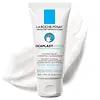What's inside
What's inside
 Key Ingredients
Key Ingredients

 Benefits
Benefits

 Concerns
Concerns

 Ingredients Side-by-side
Ingredients Side-by-side

Water
Skin ConditioningC12-15 Alkyl Benzoate
AntimicrobialPentylene Glycol
Skin ConditioningButylene Glycol
HumectantDimethicone
EmollientPotassium Cetyl Phosphate
EmulsifyingHydrogenated Coco-Glycerides
EmollientCetearyl Alcohol
EmollientGlyceryl Myristate
EmollientCetyl Alcohol
EmollientStearyl Alcohol
EmollientStearyl Heptanoate
EmollientGlycerin
HumectantAdansonia Digitata Seed Oil
EmollientCetearyl Glucoside
EmulsifyingParfum
MaskingAllantoin
Skin ConditioningSesamum Indicum Seed Oil
EmollientTetrasodium EDTA
Butyrospermum Parkii Butter
Skin ConditioningDehydroacetic Acid
PreservativeLecithin
EmollientSodium PCA
HumectantTapioca Starch
Limonene
PerfumingButyrospermum Parkii Butter Unsaponifiables
Skin ConditioningPalmitoyl Myristyl Serinate
Skin ConditioningCaramel
Cosmetic ColorantMorus Alba Root Extract
BleachingCitronellol
PerfumingLinalool
PerfumingTocopherol
AntioxidantCitral
PerfumingEugenol
PerfumingBenzyl Benzoate
AntimicrobialWater, C12-15 Alkyl Benzoate, Pentylene Glycol, Butylene Glycol, Dimethicone, Potassium Cetyl Phosphate, Hydrogenated Coco-Glycerides, Cetearyl Alcohol, Glyceryl Myristate, Cetyl Alcohol, Stearyl Alcohol, Stearyl Heptanoate, Glycerin, Adansonia Digitata Seed Oil, Cetearyl Glucoside, Parfum, Allantoin, Sesamum Indicum Seed Oil, Tetrasodium EDTA, Butyrospermum Parkii Butter, Dehydroacetic Acid, Lecithin, Sodium PCA, Tapioca Starch, Limonene, Butyrospermum Parkii Butter Unsaponifiables, Palmitoyl Myristyl Serinate, Caramel, Morus Alba Root Extract, Citronellol, Linalool, Tocopherol, Citral, Eugenol, Benzyl Benzoate
 Reviews
Reviews

Ingredients Explained
These ingredients are found in both products.
Ingredients higher up in an ingredient list are typically present in a larger amount.
Butylene Glycol (or BG) is used within cosmetic products for a few different reasons:
Overall, Butylene Glycol is a safe and well-rounded ingredient that works well with other ingredients.
Though this ingredient works well with most skin types, some people with sensitive skin may experience a reaction such as allergic rashes, closed comedones, or itchiness.
Learn more about Butylene GlycolThis ingredient is also known as shea butter. It is an effective skin hydrator and emollient.
Emollients help soothe and soften your skin. It does this by creating a protective film on your skin. This barrier helps trap moisture and keeps your skin hydrated. Emollients may be effective at treating dry or itchy skin.
Shea butter is rich in antioxidants. Antioxidants help fight free-radicals, or molecules that may harm the body. It is also full of fatty acids including stearic acid and linoleic acid. These acids help replenish the skin and keep skin moisturized.
While Shea Butter has an SPF rating of about 3-4, it is not a sunscreen replacement.
Shea butter may not be fungal acne safe. We recommend speaking with a professional if you have any concerns.
Learn more about Butyrospermum Parkii ButterCetearyl alcohol is a mixture of two fatty alcohols: cetyl alcohol and stearyl alcohol. It is mainly used as an emulsifier. Emulsifiers help prevent the separation of oils and products. Due to its composition, it can also be used to thicken a product or help create foam.
Cetearyl alcohol is an emollient. Emollients help soothe and hydrate the skin by trapping moisture.
Studies show Cetearyl alcohol is non-toxic and non-irritating. The FDA allows products labeled "alcohol-free" to have fatty alcohols.
This ingredient is usually derived from plant oils such as palm, vegetable, or coconut oils. There is debate on whether this ingredient will cause acne.
Due to the fatty acid base, this ingredient may not be Malassezia folliculitis safe.
Learn more about Cetearyl AlcoholDimethicone is a type of synthetic silicone created from natural materials such as quartz.
What it does:
Dimethicone comes in different viscosities:
Depending on the viscosity, dimethicone has different properties.
Ingredients lists don't always show which type is used, so we recommend reaching out to the brand if you have questions about the viscosity.
This ingredient is unlikely to cause irritation because it does not get absorbed into skin. However, people with silicone allergies should be careful about using this ingredient.
Note: Dimethicone may contribute to pilling. This is because it is not oil or water soluble, so pilling may occur when layered with products. When mixed with heavy oils in a formula, the outcome is also quite greasy.
Learn more about DimethiconeGlycerin is already naturally found in your skin. It helps moisturize and protect your skin.
A study from 2016 found glycerin to be more effective as a humectant than AHAs and hyaluronic acid.
As a humectant, it helps the skin stay hydrated by pulling moisture to your skin. The low molecular weight of glycerin allows it to pull moisture into the deeper layers of your skin.
Hydrated skin improves your skin barrier; Your skin barrier helps protect against irritants and bacteria.
Glycerin has also been found to have antimicrobial and antiviral properties. Due to these properties, glycerin is often used in wound and burn treatments.
In cosmetics, glycerin is usually derived from plants such as soybean or palm. However, it can also be sourced from animals, such as tallow or animal fat.
This ingredient is organic, colorless, odorless, and non-toxic.
Glycerin is the name for this ingredient in American English. British English uses Glycerol/Glycerine.
Learn more about GlycerinWater. It's the most common cosmetic ingredient of all. You'll usually see it at the top of ingredient lists, meaning that it makes up the largest part of the product.
So why is it so popular? Water most often acts as a solvent - this means that it helps dissolve other ingredients into the formulation.
You'll also recognize water as that liquid we all need to stay alive. If you see this, drink a glass of water. Stay hydrated!
Learn more about Water